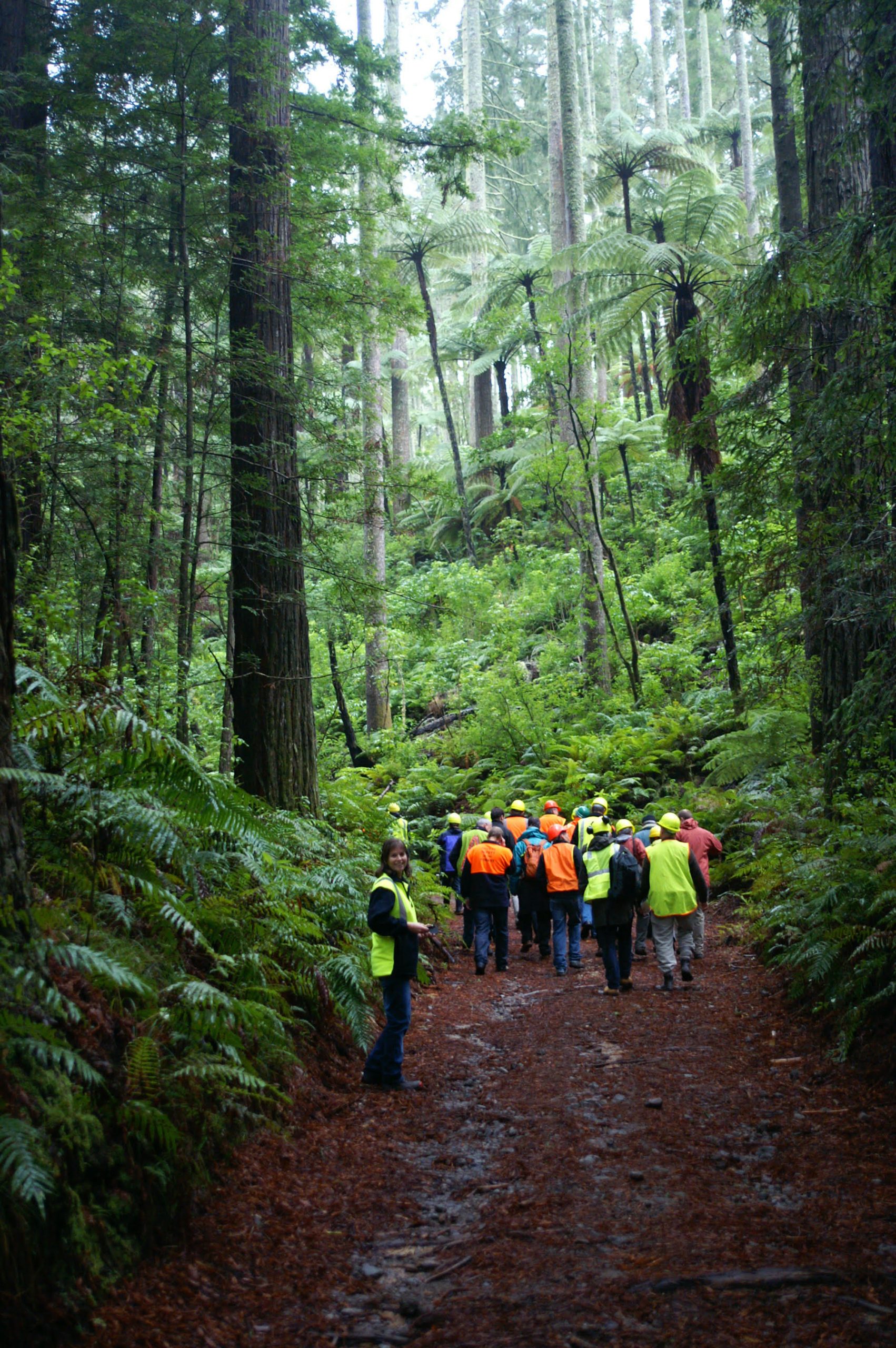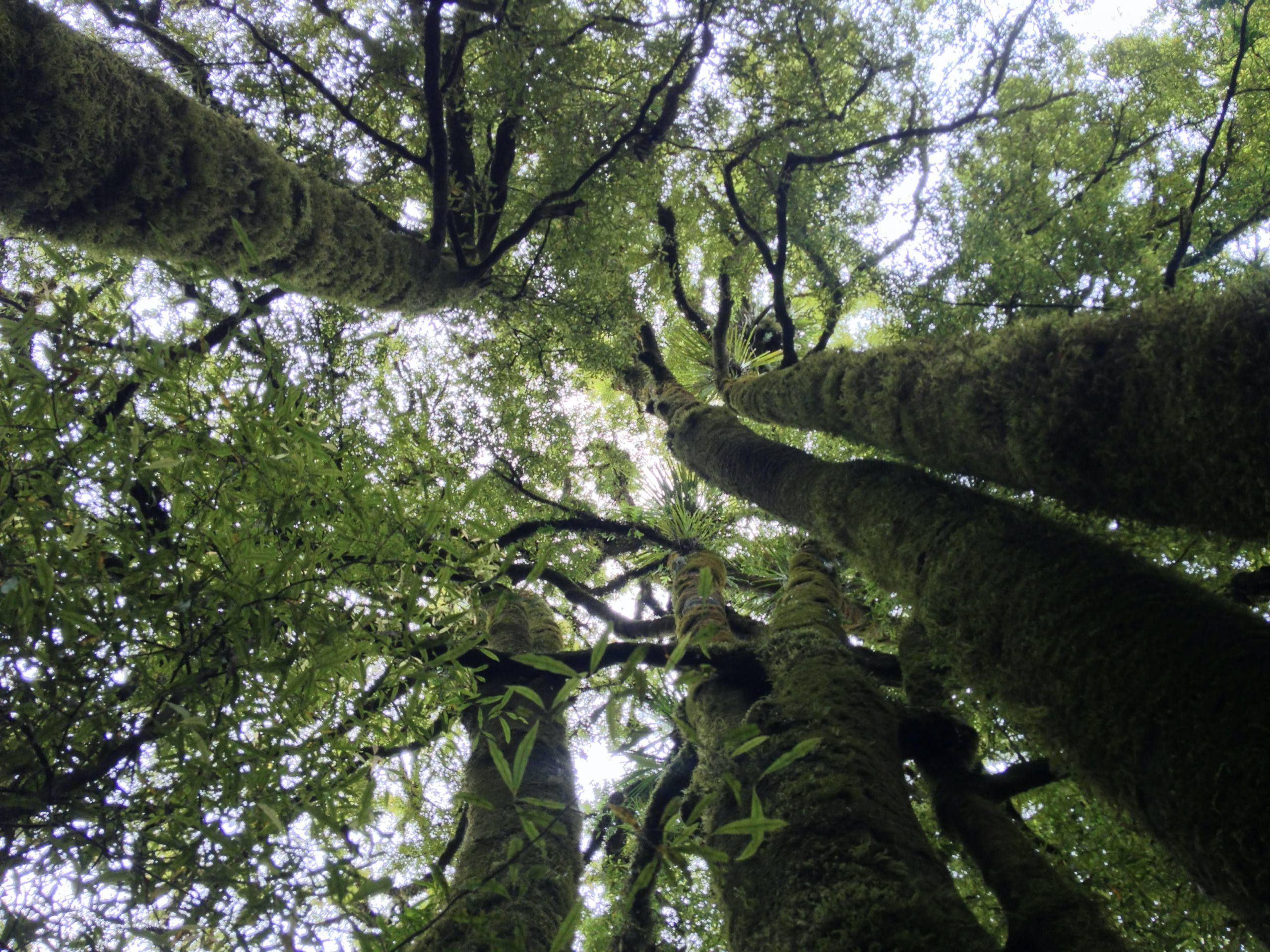Most professional foresters would love to grow more native trees. The reality is that generally their job is about generating a competitive return on investment for forest owners, something that, with current economic and policy settings, simply cannot be done with native trees. A long-term and stable policy framework which includes native species as a timber resource is one way forward; also more public appreciation of forestry as a land use and increased willingness to pay for premium products.
Being a professional suggests things such as being qualified and practising in a definable area, having expertise based on a deep level of knowledge, and having a commitment to the area of practice – possibly (but not necessarily) through being a member of a relevant professional body.
The New Zealand Institute of Forestry (NZIF) exists to advance the profession of forestry within New Zealand by establishing, maintaining and improving standards; developing and recognising good forest practice; recognising, regulating and supporting those demonstrating competence; and acting as an independent advocate for forestry. Members of NZIF recognise forestry as including all activities involved in the management and use of forests and their products, the purpose of which are the production of wood or other forest benefits and the maintenance of forest environments in their most beneficial form. In other words as a professional forester we recognise all trees and forests as having value, we have the skills to establish and manage all forests in the New Zealand environment, and we will almost always advocate for more trees.
”most professional foresters in New Zealand get paid to grow trees for a competitive return on investment
While many would like to grow natives and other alternative species, the sad reality is, like the Beatles song Money That’s What I Want….”your love gives me such a thrill but your love won’t pay my bills”. Most professional foresters are employed to grow a commercial crop and produce a product that people are prepared to pay for.
While the media, customers and consumers claim to want to buy sustainable products, presumably including purpose-grown native timber, in reality they pay no premium for certified trees. Notwithstanding forest managers’ commitments to biodiversity, the best water and soil management and improved prospects for local employment, the consumer seems to always buy on price when it comes to big ticket items – for example, when purchasing the materials to build a house, despite saying climate change is a concern.
Almost all foresters I speak to love growing trees and would love to grow more of our native species, however native trees don’t stack up financially, partly because a generation of consumers see the use of native timber as a sin. They don’t stack up financially because New Zealand subsidises alternative uses (agriculture) of land so the land price rises to reflect that. They don’t stack up because planting a native tree is a gamble on the right to harvest in 10 – 30 elections time.

Native trees contribute to our biodiversity and can enhance it. Regulators have a long and unbroken history of bias in regulation. They impose obligations on landowners generating public benefits, ostensibly to ‘maintain’ what is there but often in order to justify not imposing obligations on others. Just as forest owners lost the right to change land use because of greenhouse gas emissions by other parts of society, it seems the public desire for biodiversity will be turned into an obligation for forest owners.
Regardless of these opportunities and challenges, professional foresters do protect and will work hard to enhance native remnants within their estate. They more than most are very aware of the benefits of native forest, be this for recreation, biodiversity, clean streams, or numerous other values. Many larger forests are now managed under some type of forest certification scheme, meaning native remnants have to be protected. Many professional foresters do grow native trees on land they own freehold. However growing natives is currently a cost with little or no financial benefit, and

It is well known that our commercial forest plantations comprise virtually 100 percent exotic softwood. The species we grow have the characteristics current consumers are willing to pay for. The question is – will this be the case in 30 years time? All professional foresters are partial ‘seers’, when we plant a tree we are trying to guess what consumers will want at the time of harvest (approximately 28 years for Pinus radiata, up to 100 years for other species). With this in mind, I question the ongoing and longer-term demand for a low-cost commodity product. As large parts of the world move from poverty to the middle class (think China) we are likely to see demand increase for specialty products including wooden furniture which will last more than 5 years, speciality decorative timbers to line houses and to put down as floors and use as solid doors. Additionally as we move from plastics there will be demand for natural products to replace it, and wood is one solution.
So the current professional forester has a decision to make when planting in 2021. Should we continue planting all our estate in radiata or other softwoods, or should we hedge our bets and add in some decorative species, some species which can be used in place of plastic, species which can be used to produce carbon neutral fuel. Sadly while these decisions are being made, most foresters will not turn to our native species as they believe they will never be able to harvest them.
For professional foresters to decide to plant more native species, they will need to have agreement from government and NGOs that it will be possible to sustainably harvest them in future. We will need consumers to be willing to pay the price required for selective harvesting, and we will need to have confidence that policies agreed now will be consistent in 50-100 years when the trees we plant today will be ready for harvest.
I can hear the reader ask – what about planting for carbon? I agree there is a good long-term return from trading in carbon credits generated by a native forest. However most of our native species grow very slowly, at least initially (especially when compared to radiata). Most landowners are seeking a return within their lifetime, not within their grandchildren’s lifetime and therefore are instructing professional foresters to plant fast growing species on their land so they can maximise their carbon credit production over the next 20 years.

The NZIF represents professional foresters and has developed policies around forestry practice and its place within the New Zealand economy reflecting environmental, social and cultural, and economic imperatives. The NZIF has created a Forest Policy for New Zealand which includes natives, but until now we have failed to achieve buy-in from successive governments or their advisors. Simply put, forests to date have been seen as a hindrance rather than an opportunity for good. However, this may change, for the recent report of the Climate Change Commission identifies the role forestry can play to help mitigate climate change.
”Any policy developed must also recognise the importance of other values of forest including wood production, biodiversity, recreation, food protection and others.
There are various myths around plantation forestry, which are patently untrue – examples include that pines poison the soil, are the leading cause of asthma, that native trees cost $100,000 per ha to plant and are extremely slow growing. There is an urgent need for more research, training, and better dissemination of information to the public to ensure the country as a whole garners the best outcomes from forestry as a land use. If New Zealand is to grow the forest estate (both exotic and native) we need to bring the public along with us. NZIF is taking a leadership role on these and kindred matters and believes we will only get the best from a broad, well-balanced and long term policy on forestry which provides for a wide range of forests in our working landscapes.
In summary, professional foresters would love to grow more native forest, but need a comparable return – be this from timber, carbon, or via subsidies – to exotic plantations. If the public and government are better informed around the best strategies, there will be more acceptance of trees over food in some land-use areas, and there will be a concerted effort to set planting targets. Only then will more landowners instruct professional foresters to do more than continue with business as normal.



Leave a comment